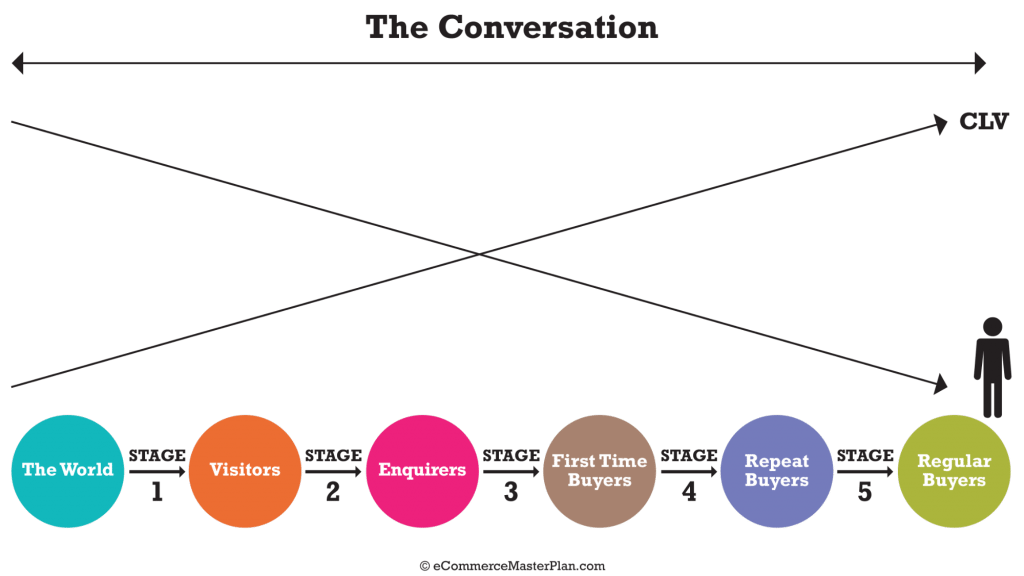Introducing the Customer MasterPlan Model
Episode #1 of the course How to influence your customers to buy more by Chloë Thomas
Welcome to the course!
I’m Chloë Thomas, host of the eCommerce MasterPlan Podcast and author of several books on marketing and eCommerce (including the Amazon bestseller Customer Persuasion: How to Influence your Customers to Buy More and Why an Ethical Approach will Always Win, on which this course is based).
Over the next ten days, you’re going to learn how to get more new and repeat buyers into your business.
Today I’m going to introduce you to the model at the heart of this course—the Customer MasterPlan.
The six circles and five arrows across the bottom of the model are the most important part, so let’s start there.
The Customer Relationship Levels
Each of the six circles represents one of the Customer Relationship Levels. From left to right, they are:
• The World – Literally every single person in the world. Some have heard of you, some haven’t. None of them have ever been to your website, and they don’t know a lot about the reality of your business.
• Visitors – These are the customers who have made it as far as your website. What they’ve heard about you out in the world was strong enough to get them to pay you a visit. But so far that’s all they’ve done, just visited.
• Enquirers – Your enquirers are the customers who’ve given you their email address. They might have given you more information than that (their name or address), but they have definitely given you their email address. You are now able to send marketing straight into their inbox that is relevant to their Customer Relationship Level.
• First Time Buyers – Finally we’re making some money! These customers have made their first purchase; they’ve had enough interactions with your business to come to the decision to buy one of your products.
• Repeat Buyers – This is the point at which most businesses start to make a decent profit. These are the customers who have bought more than once—they were so impressed with their first purchase experience that they just had to come back for more. (And you’ve probably had to work quite hard to get them to do that.)
• Regular Buyers – This is the holy grail. These are the customers who just keep buying; at times they seem to know your business better than you do! You need to keep them happy and learn from them so that you can make the rest of your business better.
Your job is to move as many customers as you can from the left side to the right side of the model as quickly as possible. The more of them you move and the quicker you do it, the more money you will make and the faster your business will grow.
Stages 1 to 5
The stages are where you focus your effort to persuade customers to move up to the next Customer Relationship Level.
To be very successful, you need all five stages working well, but you can’t effectively improve all of them at the same time—so in lesson 7 I’ll be showing you how to work out where to start.
Over the next five lessons, I’m going to take you into each of these stages in more detail, sharing what it’s key to get right and messages you should be giving customers.
The Conversation
The Conversation runs throughout your relationship with the customer, and it’s unique for every single one of them! In lesson 8, I’ll explain further and give you some easy ways to improve your Conversation.
The Money and People Arrows
The arrow that points to “CLV” (Customer Lifetime Value) is there to remind you that each customer becomes more valuable as you influence them up through the Customer Relationship Levels.
The arrow that points to the stickman is a reminder that the number of customers you are dealing with reduces as they move through the Customer Relationship Levels.
Tomorrow, I’m going to tell you more about what to do in Stage 1 to influence customers from The World to visit your website. It’s a huge challenge for every business, so don’t miss out!
Catch up tomorrow,
Chloë
Recommended book
Share with friends


